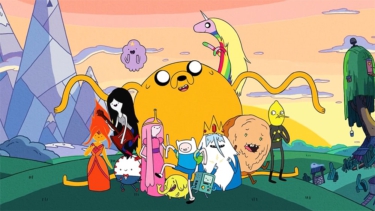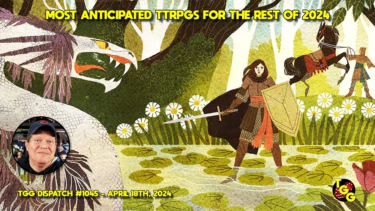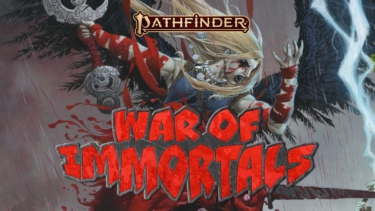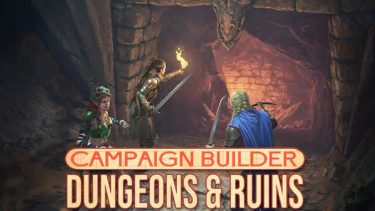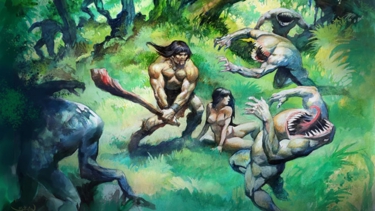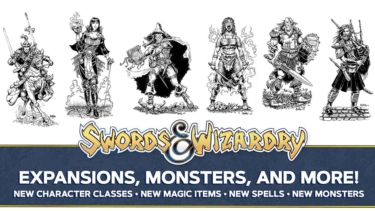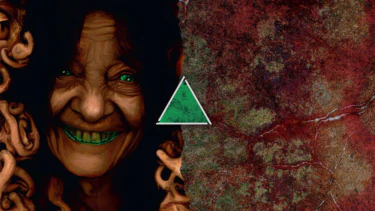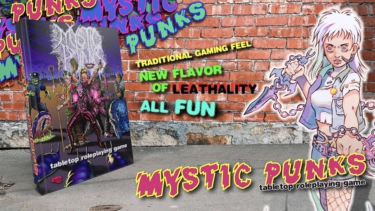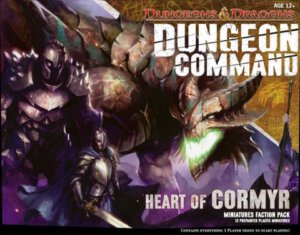
Publisher: Wizards of the Coast
Designers: Kevin Tatroe, Peter Lee, and Rodney Thompson
Year: 2012
Genre: Light fantasy miniatures skirmish game
Players: Two or more players
Ages: 12+
Playing Time: 60 – 90 Minutes
MSRP: $39.95 for each faction pack: Heart of Cormyr, Sting of Lolth, and Tyranny of Goblins
Each faction box (and there are currently three available: Heart of Cormyr, Sting of Lolth, and Tyranny of Goblins with two more on the horizon) contains twelve pre-painted miniatures (one large, 10 medium, and one small), two commander cards, 36 Order cards, twelve creature cards representing each miniature, four interlocking double sided jigsaw battlefield cards, and a rulebook. WotC suggests each player possess their own faction box so two boxes are really required for a two player game – not simply to field enough minis for an interesting skirmish but also because each player should have their own complete deck of order cards.
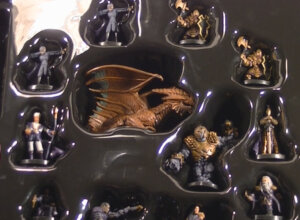
Dungeon Command is a very light skirmish level game. Each player will field their warband, led by a command figure, and maneuver them into tactically sound positions of attack and defense while playing Order cards in order to boost the abilities or powers of their own units and avoiding taking damage at the same time. Each side has a commander who is rated for Morale (the breakpoint of your forces) and Leadership (maximum level of creatures allowed in play) while possessing special abilities of their own. The Commander card also indicates the starting number of creatures to begin the battle with as well as the size of the Order card hand allowed. You’ll want to keep in mind the commander isn’t represented on the table top as you would find in many other games.
The sequence of play is straight forward with four phases comprising each turn: Refresh, Activate, Deploy, and Clean Up.
Refresh – Creatures are untapped so they’re ready for action this turn and you draw one order card.
Activate – Each creature (in any order) may perform an action. The creature may move, attack, use a power on its card, take an action indicated on an Order card which is played, or trigger an effect from some single source. Creatures can move and attack although attacking will tap the creature and some powers and abilities require the creature card to be tapped also. Once a creature is tapped it may not perform any other actions until is is once again untapped.
Deploy – Bring any creatures from your creature hand onto the start area as long as the total level of creatures doesn’t exceed the current Leadership value.
Clean Up – End of turn effects are resolved, you draw back up to you maximum creature hand size, and untap your creatures once again to respond to your enemy’s upcoming actions.
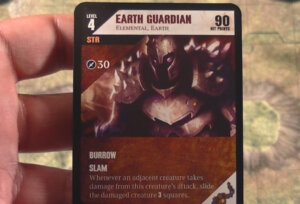
Attacking is straight forward and I’m sure many people will be surprised there are no dice in the game. What?!?!?! No Dice in a D&D game for resolution? If adjacent to an enemy (and still in an untapped state) a creature may make a melee attack or ranged attack if within range and line of sight. Damage is automatic and can be modified by the play of order cards thus possibly increasing damage, or even reducing damage or eliminating it altogether if on the defense. Each creature has a set number of hit points and once that number is reached or exceeded the creature in question is destroyed. The miniature is removed from the battlefield and the commander loses Morale points equaling the creature’s level. Each player has the ability for a creature to Cower as opposed to taking damage from an attack. A commander can spend one Morale point to offset ten points of damage and, while those Morale points are critical currency, sometimes keeping a powerful creature on the table for another turn can mean the difference between victory and defeat.
The game continues until one side is reduced to zero Morale or has no creatures on the board. Or, in other words, it’s all about the last man or monster standing.
I have to say early on the battles can be a lot of fun as you’re positioning your creatures to best effect and utilizing powers and Order cards to boost movement, deal killing blows, deflect damage and so on. The problem lies at the turning point of the battle when each player finds they have no Order cards left they can play. Keep in mind you only draw one Order card each turn and you can very easily burn through what you have in hand during a particularly hairy Activation phase. When this happens the options available to each side become rather limited. Add to this the fact some of the Order cards don’t seem to make sense and are open to a lot of interpretation.
As each creature is specifically capable of dealing so much damage each turn, or using an ability or power, the randomness and fun begins to drain as you begin to feel like you’re just slogging through each turn as you easily predict what your opponent will do while they assuredly figure out what you’ll plan to dish out. This is where the diceless combat and Order cards come back to bite the system. Sure, you’ll get that one Order card each turn but the reality is there many times you’ll play an attack card and your opponent follows with a defense card. If you find you have a defense card in hand and your opponent levels a standard attack you just sit back and take the damage because you know you’ll want to hold onto that valuable defense for the next attack card leveled at your forces. Also you find you’re drawing Order cards that can’t be used with the forces you have on the board as those creatures have been knocked out of the game.
What began as an interesting game of tactics and positioning soon degenerates into a back and forth of repetitive and predictable combat results. This is a real shame because the system of maneuvering and tactical positioning is solid as you face the challenge of getting the right troops into the right spots to best use their powers and benefit from your Order cards in hand. Once the two sides have entered close quarters everything begins to change as order cards are used up faster than they’re replaced and the game becomes a bit of a bore – especially once your opponent and you are sitting there hoping for a good Order card to be drawn each turn since neither of you have any in hand which are usable.
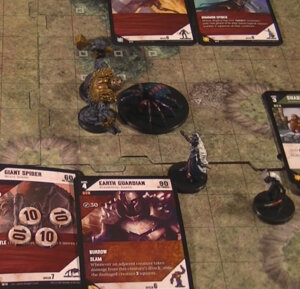
This doesn’t mean there isn’t promise in the system and, as Elliott likes to do, I’ll make a few suggestions how the game experience can easily be improved with just a couple of changes:
Each side has a deck of thirty six Order cards and, truth be told, there could be more variety found in the decks to make more cards more useful. The player has to select a minimum of thirty cards to create their deck for each battle. If the number of cards included were to be increased to say fifty, with more variety and a handful of other useful effects, this would allow more of a deck building element to enter play as you could tune your deck to your style of play. Possibly including cards which provide two benefits in which you can choose one would go a long way as well. If you want to go for a more attack oriented deck you could, or focus more on added movement, or defense, of special powers. This would really help toward avoiding what begins to appear as a rather deck as far as your Order cards seem as the battle progresses and you have no Order cards or ones which are useless.
Also due to the fact most players will find their available selection of orders in hand will dwindle to nothing rather quickly, we incorporated our own optional rule where a player could spend one morale point during the Refresh phase to draw another Order card. Sure, this might not seem like much – and those Morale points are all that’s keeping your warband in the fight – but having the chance to get another Order card into your hand at a critical time helps alleviate some of that tedium that seemingly never fails to rear its head in the endgame.
My finally thoughts are if you’re a fan of D&D, and want to get your hands on some very affordable miniatures, by all means head out and get yourself some copies of the Dungeon Command faction boxes. However, if you’re looking for a solid fantasy skirmish game which feels fresh each and every time you play you might want to steer clear of the system until the designers at Wizards of the Coast implement some wholesale changes.
- Broken Weave for 5E is Out in PDF - Apr 19, 2024
- Score Big Savings with the Ars Magica 5E Bundle of Holding - Apr 19, 2024
- Mark Herman’s For the People 25th Anniversary Edition is Marching Into Stores - Apr 19, 2024




